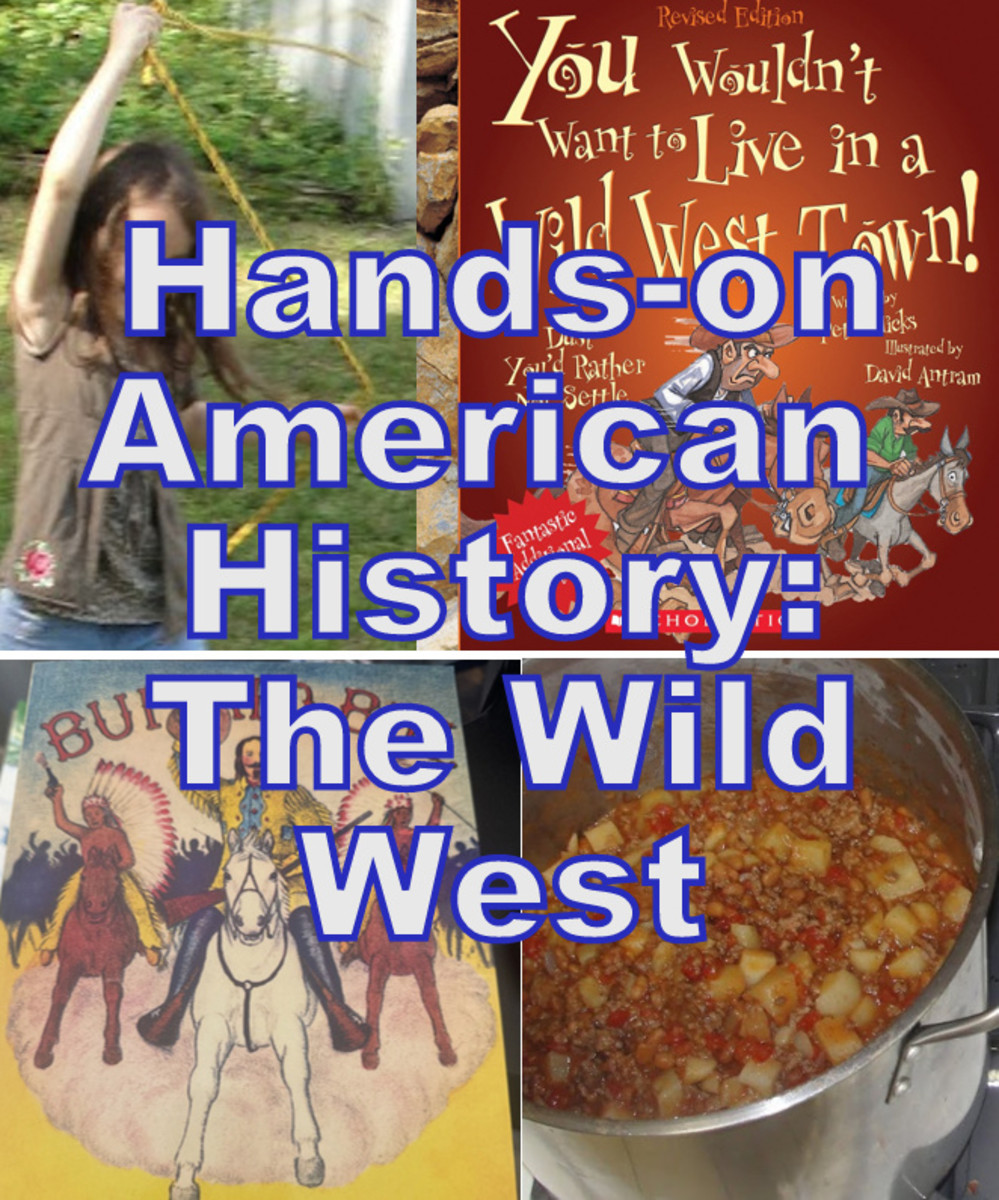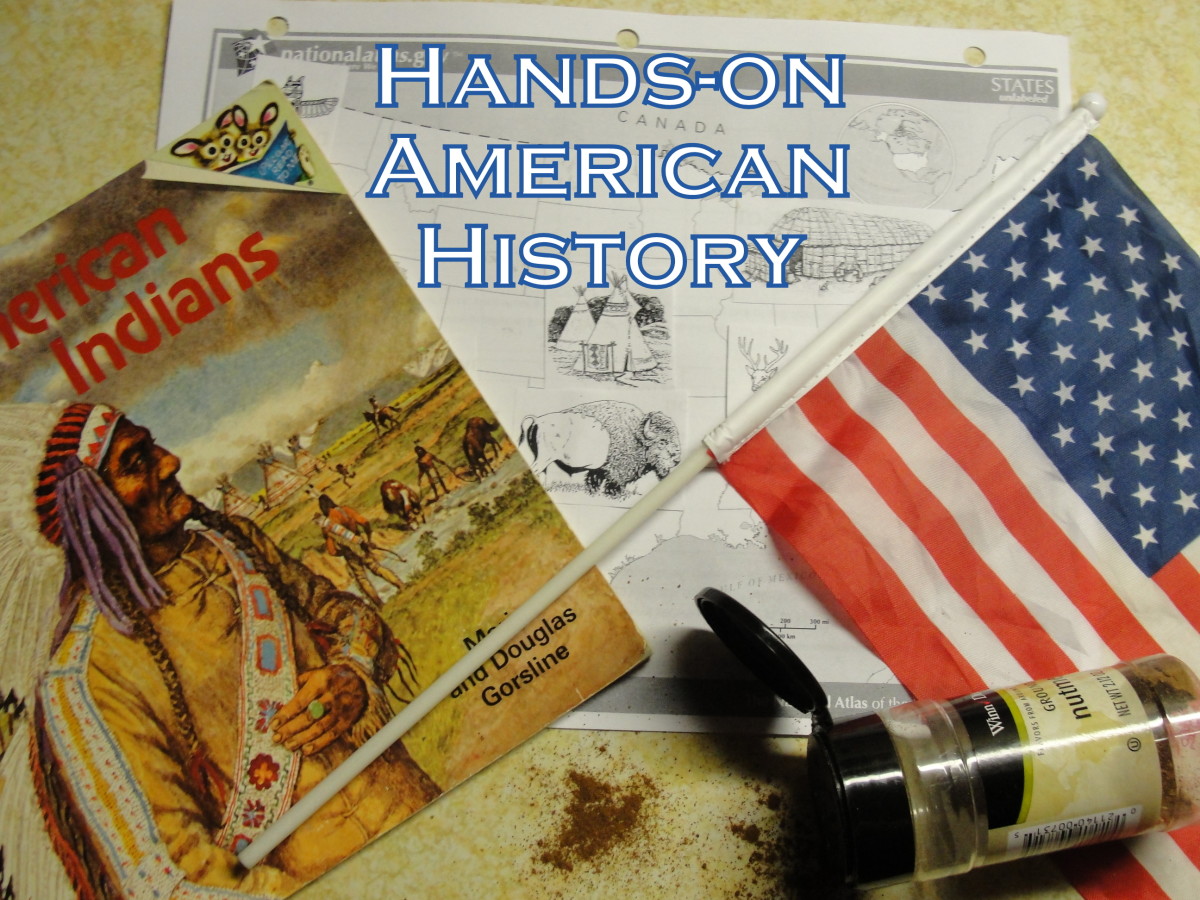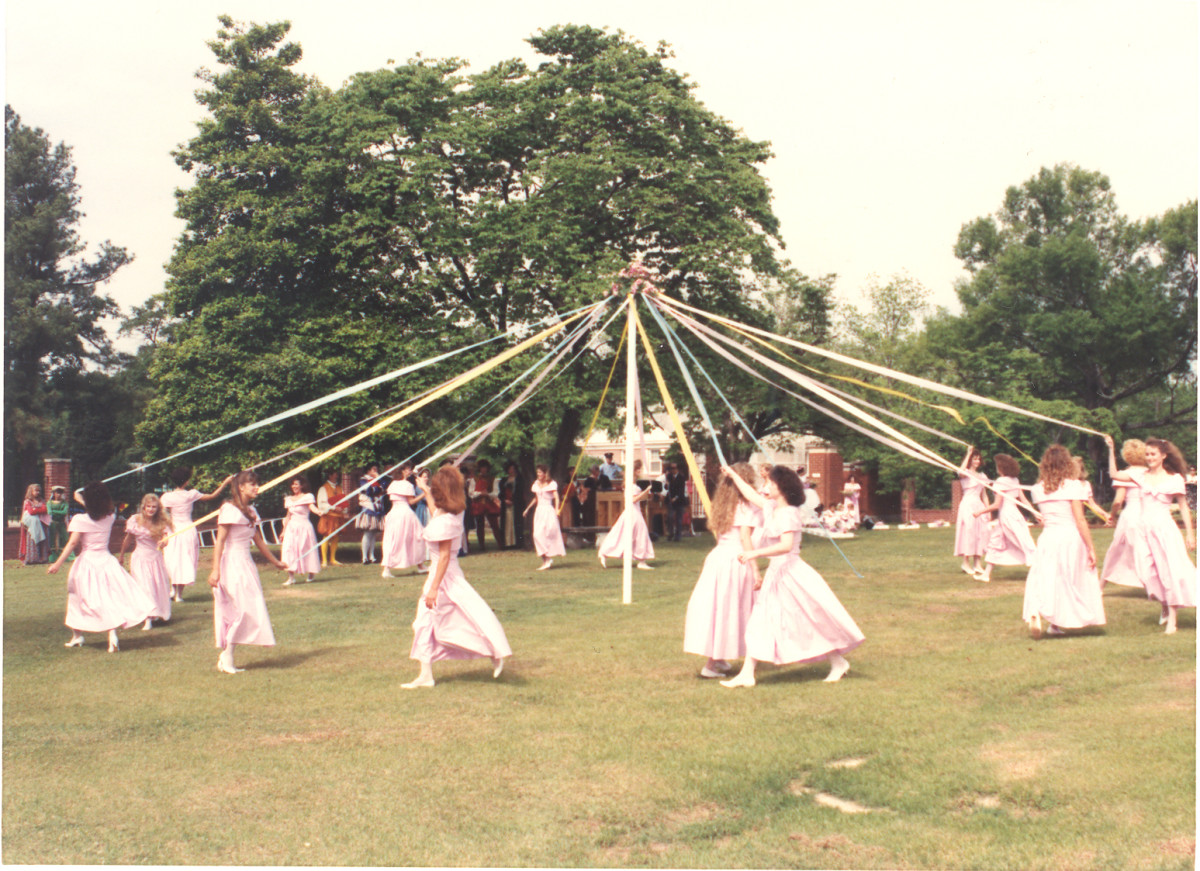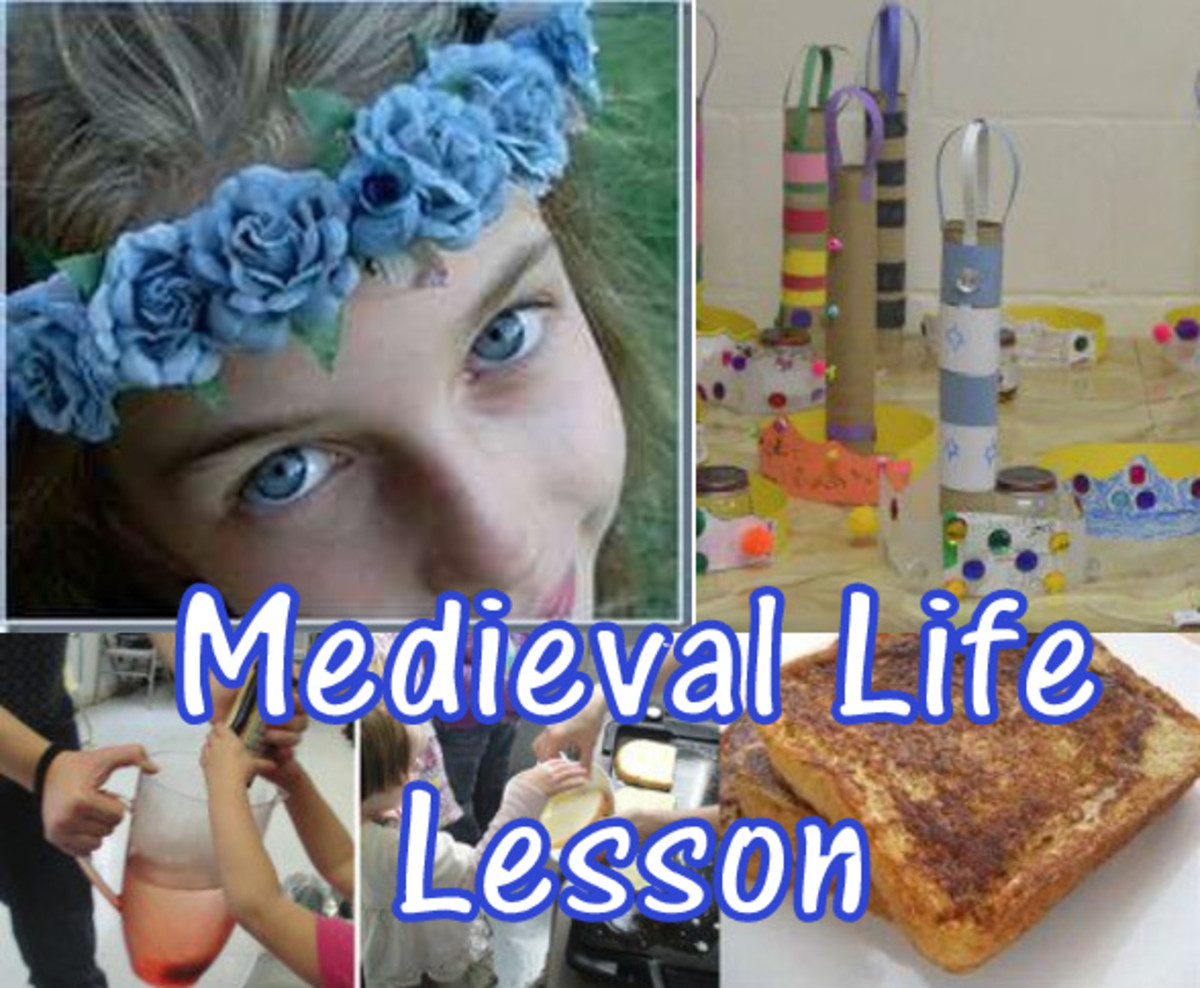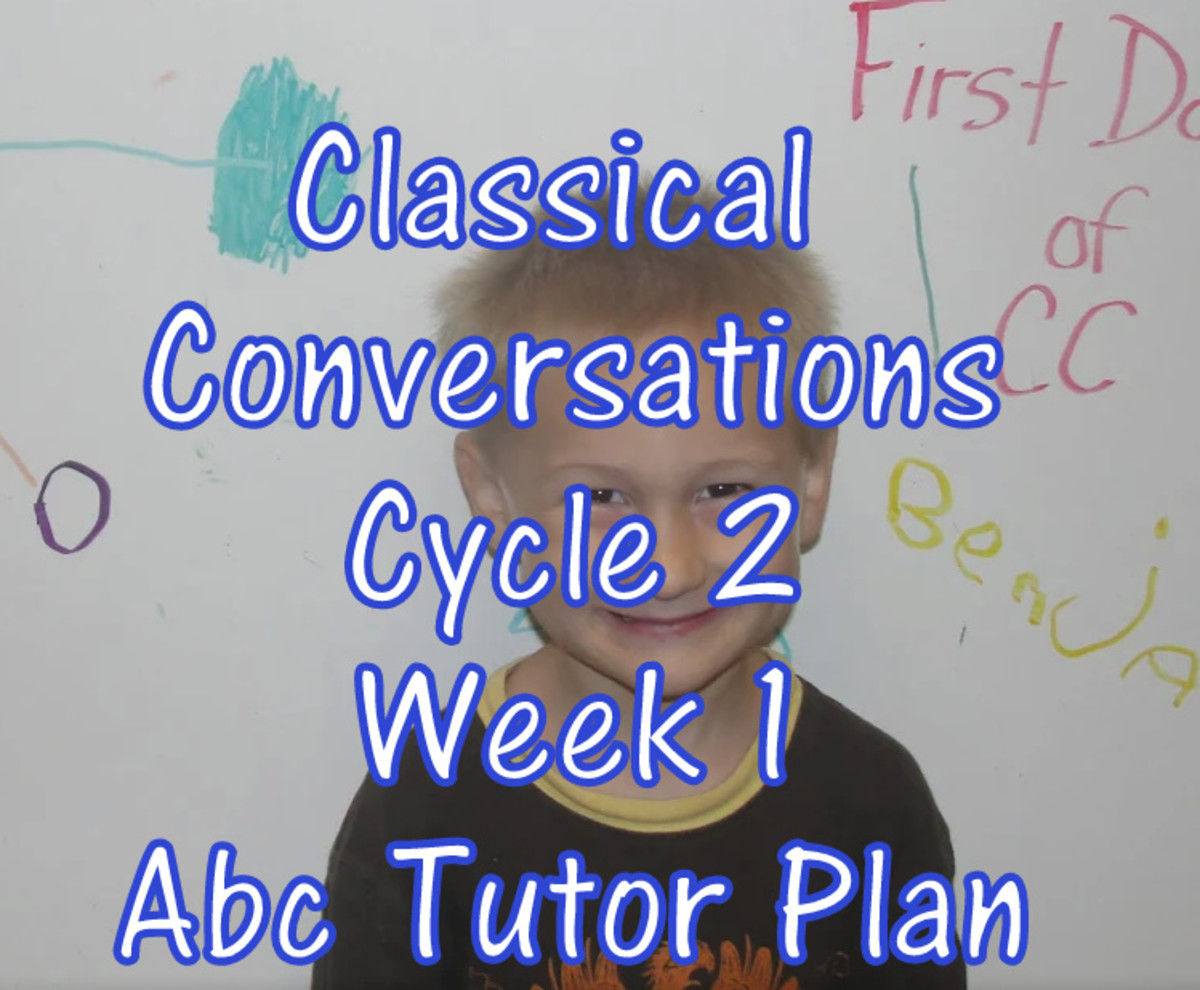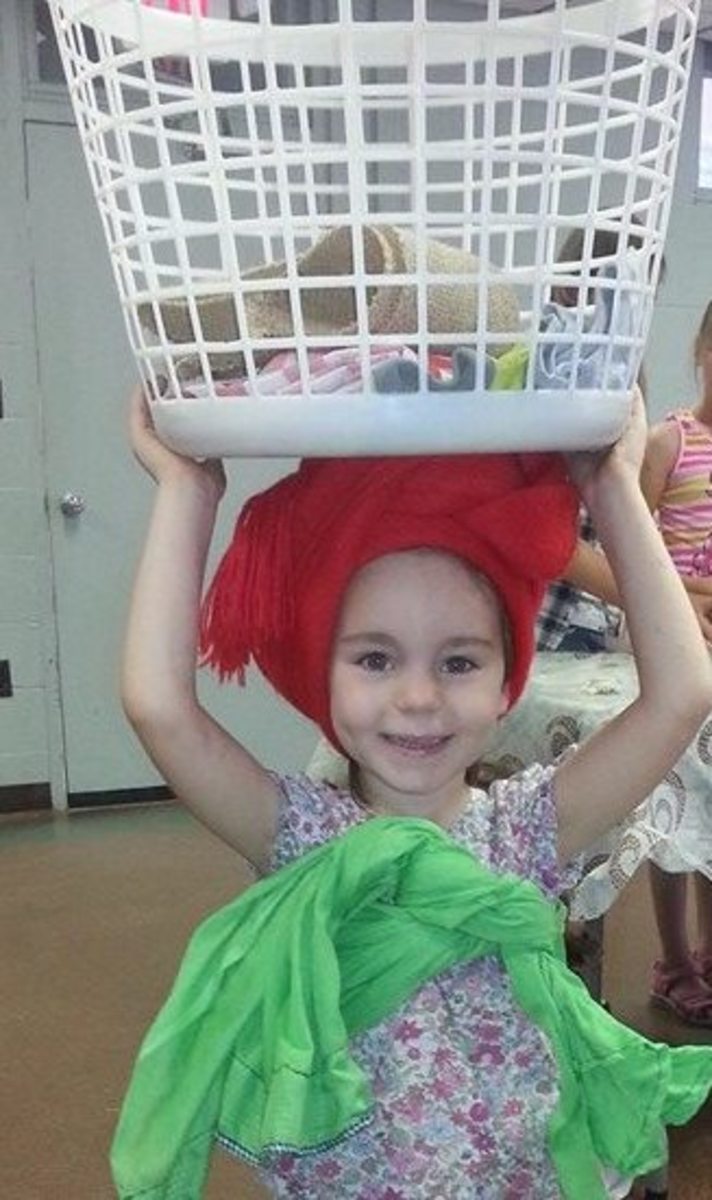- HubPages»
- Education and Science»
- Teaching»
- Lesson Plans
Plant Roots and Stems Lesson Plan for Elementary

Observe roots and stems, observe transpiration in action and dramatize it, create a plants part salad, and more in this fun, hands-on lesson on roots and stems and plant systems! This is part 3 of a 5 part hands-on unit on Plants. This lesson is geared toward 2nd-3rd grade level children and their siblings. I created this to do with a weekly homeschool co-op which meets each week for 2 hours. Use this fun lesson with your class, family, after school program, camp, or co-op!
Color Changes Begin (Stem/Xylem Demo)

1. Pray. Read and discuss Psalm 1:1-3.
2. Place white carnation (or other white flower) and celery in water generously colored with food dye.
- Cut the stems just before placing them in cold water.
- It takes about 30 minutes for a short stalk of celery to begin showing dye in its leaves. It takes about 1 1/2 hours for the dye to show up a little bit in the flower petals if you have very short stems (about 1 inch long).
YOU WILL NEED:
- celery and/or white flowers (like carnations) and a bowl or cup of water with a generous amount of food dye
Transpiration

3. Briefly talk about transpiration.
- Show the plastic bag. Other than air, it's empty isn't it? What do you think will happen if we attach this bag to this leaf and leave it here?
- Cover a leaf on a tree or other plant with a clear plastic bag and tightly close the bag using a clothespin, rubber band, or tape. Make sure it's in a sunny spot.
- If the tree or plant is indoors, move it to a sunny spot. Continue on with the lesson.
- (It takes about 30 minutes for water droplets to show well.)
YOU WILL NEED:
- a tree or other plant, a clear plastic bag such as a sandwich bag, & a clothespin, rubber band, or tape
Observing Roots


4. (Optional) While outside, pull up weeds and grass, making sure to include the roots.
5. Using the complete plants (with roots) pulled up from outside or plants brought to class, allow children to study the roots using magnifying glasses. What do you notice about the roots?
As they observe the root systems, briefly mention:
- Usually (not always): Most dicots have taproots (1 main root) & monocots have fibrous roots (lots of roots growing in many directions & wider rather than deeper). [Show examples]
- Why are roots important? (Allow students to answer) Root system anchors the plant in the soil, absorbs water & minerals for plant growth, & stores food
- Some plants like strawberries reproduce not by flowers but by vegetative reproduction. Their roots spread out to form new plants.
- The root cap (made of dead cells) protects new cells as they push through soil to lengthen root. Root tips are the strongest part of the root. They can lift houses. They upset sidewalks. If you’ve been on an uneven sidewalk with cracks, roots are probably to blame.
- Roots can grow long to get to water. The roots of a fig tree in South Africa grew 393 feet in order to get water! (That’s the length of a 36 story building!)
- Some roots grow above the ground like the ones for a banyan tree, which have roots hanging down from its branches in addition to the ones underground.
- [Show examples or pictures of bulbs or tubers.] Bulbs & tubers are not roots. Roots grow out of the bottom of a bulb. A bulb is made of special leaves & a short stem & is like a seed.
YOU WILL NEED:
- plants with roots (such as weeds and grass -- try to include one with a tap root like a wild flower & one with fibrous roots like grass), magnifying glasses, paper towels or table covers (to minimize the dirt mess), and examples or pictures of bulbs or tubers
Roots & Osmosis

6. Root hairs kind of look fuzzy like fur. Can you find some?
- Root hairs do most of the work, absorbing water & nutrients. Each root hair lives for about 6 weeks & then dies and is replaced.
- The root hairs absorb nutrients & water through osmosis, which is a continual movement of water from solution of higher water content through semipermeable membrane into solution of lower water content.
- Demonstrate osmosis by placing a piece of paper towel next to a small puddle of water. If possible allow the students to work in pairs to do this.
YOU WILL NEED:
- water and paper towels
Being Rooted in the Word
7. Talk about being rooted in the word. Colossians 2:6-7 says, "So then, just as you received Christ Jesus as Lord, continue to live your lives in him, rooted and built up in him, strengthened in the faith as you were taught, and overflowing with thankfulness." What does it mean to be rooted in Jesus?
Observing Stems

8. Allow children to study the stems of the plants using a magnifying glass. Have them break them open and look inside. What do they notice?
Discuss stems:
- What gives you your shape & allows you to move? (Skeleton & muscles; backbone) A plant needs to move too, lifting their bodies off the ground & giving them form.
- Plants have stems that contain tubes called a vascular system, like our veins & arteries. The vascular tubes carry fluids through the plant.
- Break a stem to look inside. (Some stems might require scissors.)
- Are all your stems the same? No, some are hard & woody and some are soft & green. Compare a tree stem to a flower stem.
YOU WILL NEED:
- plants used above, magnifying glasses, some tree stems (pieces cut from a small branch), and possibly scissors
Xylem & Phloem


9. Have students wash or sanitize their hands and then let them munch on a piece of celery. What do you they notice about the celery?
YOU WILL NEED:
- celery sticks for eating
10. Pass around the pieces of celery that were placed in water dyed with food coloring.
- Slice the celery so each student or pair or students can observe the dyed celery.
- How did the blue dye get into the leaves of the celery plant?
YOU WILL NEED:
- dyed celery used above, a cutting board, small knife, magnifying glasses, and small paper towel pieces (optional)
11. Xylem & Phloem
- Show a bundle of 2 different colors of straws banded together. One color represent xylem tubes and one color represents phloem tubes.
- There are 2 types of vascular tubes. Celery has lots of xylem tubes. Xylem tubes carry water & nutrients from root hairs to the leaves where water is used in photosynthesis or released through stomata. (Stomata are like tiny mouths or holes that cover a leaf.) In the xylem tubes, water zips up through the plant from the roots.
- Plants also need sugar to survive. They make their own sugar inside the leaf. The leaf takes water from the roots that came up through the xylem & combines it with light from the sun and carbon dioxide from the air to make sugar for the plant and oxygen for us and for animals. It sends sugar down from the leaves. The sugar runs throughout the entire plant’s phloem tubes to feed it. Sugar flows down through the phloem from the leaves.
YOU WILL NEED:
- a bundle of 2 different colors of straws bundled together using a rubber band
Dramatizing Transpiration

12. Dramatize transpiration.
- Ahead of time tape a piece of masking tape to the floor. Write "stomata" on it. Add other pieces of masking tape to the floor as a visual reminder that leaves have lots of stomata, not just one. If desired, place a sheet in the middle to be the leaf.
- In the xylem tubes, water zips up through the plant from the roots. Xylem tubes carry water & nutrients from root hairs to the leaves where water is used in photosynthesis or released through stomata. What are stomata? (Stomata are like tiny mouths or holes that cover a leaf.)
- The water gets pulled through a plant by a process call transpiration.
- (We did this in groups of 5.) Children will stand in a line with their hands on the shoulder of the child in front of them. Each child is a water molecule.
- The child in the front of the line will walk up to the stomata opening (the line on the floor) and will jump out of the leaf while yelling, "Evaporation." The water molecule evaporates up into the sky.
- As the front child jumps out through the stomata, that pulls the next child/water molecule. That child does the same through. jumping through the stomata while calling "evaporation."
- Repeat until everyone has done this.
- Review what you just did with transpiration. As a water molecule flies up into the sky out of the stomata, another water molecule must replace it. It pulls another one from down in the root system. This continues on.
YOU WILL NEED:
- masking tape, something to write with, & a sheet (optional)
Transpiration Evidence

13. Check on the bags that are over the leaves that you started at the beginning of class.
- Can you see any water in them?
- Where did the water come from? (the leaves) What part of the leave did the water come from? (stomata) What do we call this process? (transpiration)
- The water is kind of like the sweat of the plant. It's the water the plant took in that it doesn't need. When spending time in the hot sun, humans experience perpetration and plant leaves experience transpiration.
Optional Video to Watch on Transpiration (2 minutes)
Optional Craft


14. (Optional) If you'd like to add a craft project to this lesson, print off the above worksheet. As you review the parts and functions of the parts of a plant, have the students:
- Cut a straw to fit over the stem and glue it to the page.
- Cut pieces of yarn and glue them over the roots in the picture.
- If desired, allow students to color the flower.
YOU WILL NEED per student:
- the above worksheet, liquid glue, a straw, brown yarn, and (optional) crayons
Plant Parts Salad & Review

15. Make a salad out of various plant parts:
- First make poppy seed dressing using 1/2 cup sugar, 1/2 cup lemon juice, 2 teaspoons diced onions (or dried), 1 teaspoon mustard, 1/2 teaspoon salt, 2/3 cup oil, and 1 tablespoon poppy seeds.
- The salad can have dressing with poppy seeds (seeds), lettuce (leaves), celery or asparagus (stalk), tomato or diced apple or other sliced fruit (fruit), & carrots (roots).
- Ask children to match plant parts to vegetables & then carefully chop vegetables.
- Eat the salad.
YOU WILL NEED:
- measuring spoons, liquid measuring cup, jar with lid, large bowl, plastic forks, disposable plates, cups for water, napkins, knives and cutting boards, 1/2 cup sugar, 1/2 cup lemon juice, 2 teaspoons diced onions (or dried), 1 teaspoon mustard, 1/2 teaspoon salt, 2/3 cup oil, 1 tablespoon poppy seeds, lettuce, celery or asparagus, tomato or diced apple or other sliced fruit, & carrots
16. 5 Minute Review what we learned
Our Favorite Children's Books

What Do Roots Do? by Kathleen V. Kudlinski
Plant Plumbing: A Book About Roots and Stems by Susan Blackaby
Looking for the other lessons?

Go on a seed hunt, act out germination, create seed mosaics, make and eat a plant parts salad, dissect a flower, decorate sunflower cookies, compete in a photosynthesis relay race, got on a plant scavenger hunt, and more during this fun four part unit study on Botany and Plants!
- Seeds Lesson - Go on a seed hunt, act out germination, create seed mosaics, and more in this fun lesson on plants! This is part 1 of a 6 part unit study on Botany and Plants.
- Flowers Lesson - Go on a flower hunt, dissect a flower, create edible flowers, paint flowers, and more in this fun lesson on flowers! This is part 2 of a 6 part unit study on Botany and Plants.
- Bee & Honey Lesson - (This lesson is optional.) Dance like a bee, make edible bees using honey balls, use cheese puff balls and and juice boxes to dramatize pollination, create pipe cleaner bees and have them fly to the tune of Flight of the Bumblebee, and more! This is part 3 of a 6 part unit study on Botany and Plants.
- Roots & Stems and Transpiration Lesson - Observe roots and stems, observe transpiration in action and dramatize it, create a plants part salad, and more in this fun, hands-on lesson on roots and stems and transpiration! This is part 4 of a 6 part unit study on Botany and Plants.
- Leaves & Photosynthesis Lesson - Play a photosynthesis relay race, create an edible leaf structure, act out the parts of a tree, examine and classify tree leaves and use them to identify trees, and more in this fun, hands-on lesson on leaves and trees! This is part 5 of a 6 part unit study on Botany and Plants.
- Trees Lesson - Examine tree cookies and count the rings, create delicious tree fruit and nut balls, act out the parts of a tree, sketch a twig to learn its parts, create bark and leaf rubbings, and more in this fun, hands-on lesson on trees! This is part 6 of a 6 part unit study on Botany and Plants.
- Botany Scavenger Hunt & Field Trip Ideas - This is the culminating activity we did after a 6 week hands-on unit study on botany/plants. Children went on a fun-filled scavenger hunt for a variety of plants, and afterward had a plant-themed picnic lunch. Also included are the field trips we went on while studying this unit on botany and plants.
- All of my Fun, FREE Hands-on Science Unit Studies & Lessons - Fun, free hands-on Science unit studies and lessons - Learning through Doing: Experiments, Cooking, Dramatizations, Edible Projects, Games, Crafts - Astronomy, Geology, Biology, Plants, Genetics, CSI, Human Anatomy, Simple Machines, Electricity, Earth Science, Fossils, Weather, Five Senses, & Ecology
© 2025 Shannon

